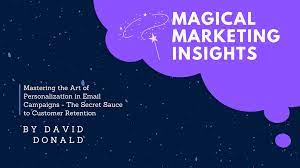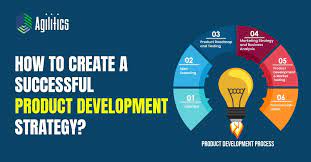Personalized email campaigns have become a cornerstone of modern marketing strategies, allowing businesses to connect with their audience on a deeper level, deliver relevant content, and drive engagement and conversions. By leveraging customer data, segmentation techniques, and dynamic content, personalized email campaigns can deliver tailored messages that resonate with individual recipients, leading to higher open rates, click-through rates, and overall campaign effectiveness. In this article, we explore the art of personalized email campaigns and provide strategies for creating compelling and impactful email experiences.
Audience Segmentation
Audience segmentation is the foundation of personalized email campaigns, allowing businesses to divide their email list into distinct segments based on demographics, behavior, preferences, and purchase history. By segmenting your audience, you can create targeted email campaigns that are tailored to the specific interests and needs of each segment. Common segmentation criteria include age, gender, location, purchase history, engagement level, and lifecycle stage. By understanding your audience segments, you can deliver relevant content and offers that resonate with each group, increasing the likelihood of engagement and conversion.
Dynamic Content Personalization
Dynamic content personalization enables businesses to create highly relevant and engaging email campaigns by dynamically customizing content based on recipient data and behavior. With dynamic content, you can personalize email subject lines, greetings, product recommendations, offers, and calls-to-action to match the interests and preferences of individual recipients. By leveraging data variables and conditional logic, you can create personalized experiences that feel tailored to each recipient, driving higher engagement and conversion rates.
Behavioral Triggers and Automation
Behavioral triggers and automation allow businesses to deliver personalized email campaigns based on specific actions or events triggered by individual recipients. By tracking user behavior, such as website visits, email opens, clicks, purchases, and abandoned carts, businesses can trigger automated email campaigns that deliver timely and relevant messages to recipients based on their actions. Examples of behavioral triggers include welcome emails, cart abandonment emails, product recommendations, re-engagement emails, and milestone emails. By automating personalized email campaigns, businesses can nurture leads, drive conversions, and improve customer retention.
Personalized Recommendations and Offers
Personalized recommendations and offers are powerful tools for driving engagement and conversion in email campaigns. By analyzing customer data and purchase history, businesses can recommend products or services that are relevant to each recipient’s interests and preferences. Personalized offers, such as discounts, promotions, or exclusive deals, can incentivize recipients to take action and make a purchase. By tailoring recommendations and offers to individual recipients, businesses can increase the likelihood of conversion and drive revenue growth.
A/B Testing and Optimization
A/B testing and optimization are essential for fine-tuning personalized email campaigns and maximizing their effectiveness. By testing different elements of your email campaigns, such as subject lines, content, images, calls-to-action, and send times, businesses can identify what resonates best with their audience and optimize their campaigns for better results. A/B testing allows businesses to experiment with different variables and measure the impact on key metrics such as open rates, click-through rates, and conversion rates. By continually testing and optimizing email campaigns, businesses can improve their performance and drive better results over time.
Personalized Email Design and Branding
Personalized email design and branding play a crucial role in creating memorable and impactful email experiences for recipients. Businesses should design emails that reflect their brand identity and messaging while incorporating personalized elements such as recipient names, images, and relevant content. Personalized email design can include dynamic content blocks, custom images, interactive elements, and mobile-responsive layouts to ensure a seamless and engaging user experience across devices. By creating visually appealing and personalized email designs, businesses can capture recipients’ attention and drive higher engagement with their campaigns.
Measurement and Analytics
Measurement and analytics are essential for evaluating the performance of personalized email campaigns and optimizing future efforts. Businesses should track key metrics such as open rates, click-through rates, conversion rates, revenue generated, and return on investment (ROI) to assess the effectiveness of their campaigns. By analyzing campaign data and user engagement patterns, businesses can gain insights into what is working well and where there are opportunities for improvement. By using data-driven insights to refine their strategies and tactics, businesses can continuously optimize their personalized email campaigns for better results and ROI.
In conclusion, personalized email campaigns offer businesses a powerful opportunity to connect with their audience on a deeper level, deliver relevant content, and drive engagement and conversions. By leveraging audience segmentation, dynamic content personalization, behavioral triggers, personalized recommendations and offers, A/B testing, personalized email design and branding, and measurement and analytics, businesses can create compelling and impactful email experiences that resonate with recipients and drive business growth. By mastering the art of personalized email campaigns, businesses can unlock the full potential.



